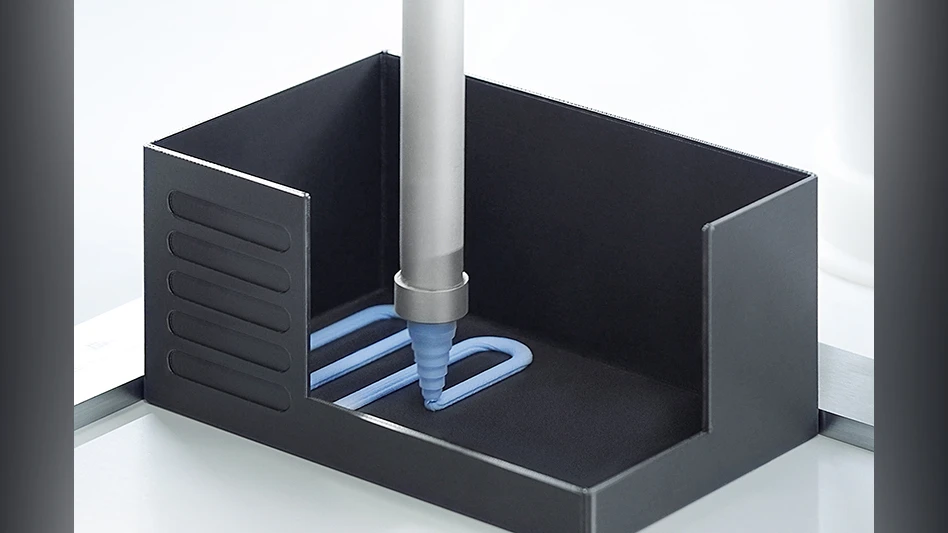 Updating legacy hardware is challenging, often resulting in an outcome that falls short of expectations. Changing one piece of legacy equipment carries system-wide implications, impacting all parts of the system. However, if you have an un-maintainable legacy system, sustaining solutions that meet today’s standards versus replacing equipment is a necessity rather than a luxury.
Updating legacy hardware is challenging, often resulting in an outcome that falls short of expectations. Changing one piece of legacy equipment carries system-wide implications, impacting all parts of the system. However, if you have an un-maintainable legacy system, sustaining solutions that meet today’s standards versus replacing equipment is a necessity rather than a luxury.
Military systems are a prime example of this proposition. Antiquated hardware needs updating, but the cost of replacing ground, aircraft, and naval systems is prohibitive. Many military systems continue to be used in the field long after the original vendors have stopped supporting the underlying technology. Updating end-of-life systems with modern hardware and firmware is the only way to upgrade many active military systems. Fortunately, open source firmware development makes it possible to update legacy equipment while controlling costs, increasing flexibility, and adhering to regulatory guidelines.
Benefits of open source
Three options are available when updating maintenance, repair, and operations (MRO) equipment: purchase a proprietary system, develop custom solutions from scratch, or utilize open source embedded systems. Proprietary systems limit project scope, locking the project into a pre-packaged system that cannot be molded to replicate a current or past generation. Developing custom solutions is typically expensive and schedule intensive. Most legacy equipment updates require the same functionality of current or past systems with modern updates, while maintaining compatibility with old systems that are still supported. This criterion is difficult to accomplish with proprietary systems, and functionality will often be compromised.
By contrast, open source embedded solutions offer an engineer complete control of the final product while allowing development based on a solid foundation. Embedded systems can achieve faster boot times by incorporating only items needed, excluding code that is not useful in a particular application. Removing excess features speeds up system performance, improves security, and reduces bugs. Nearly all embedded system packages offer software that actively monitors the execution process on multiple cores, ensuring that all systems are operating properly.
Other benefits of using open source embedded systems include:
Added flexibility – If the project is completed using open source embedded solutions, there are no licensing agreements from a product manufacturer. You own the system, and reproduction and distribution of a completed solution can be done without licensing restrictions and additional fees.
Ease of sharing – Government sector projects frequently require code information to be openly available, and sharing of information is critical for continued updates of legacy platforms. All open source code is readily available and open to the public, which saves engineers time and money.
Security – Open source applications are developed in the open, which means security experts can look for security holes and fix them proactively.

Utilizing open source
Many of today’s military contractors enlist the help of open source engineers to re-develop faster, more reliable components to integrate into various military products. One of the military’s recent projects involved an update to a military fighting machine. The goal of the project was to replace aging hardware, which was no longer procurable, with modern computing components while maintaining functional and binary compatibility. Military contractors solicited proposals form both proprietary and open-source system solution engineers. Engineers from the proprietary software company said it would be impossible to replicate a legacy solution and that modifications would have to be made to the current solution. Engineers from the open source firm could not only create a drop-in replacement but also improve speed and reliability, making an open source system a viable solution for this project.
Although updating legacy systems is generally a much more cost-effective way to upgrade equipment, working with old technology often comes with its own set of challenges. In this particular case, specifications for the system had been lost and engineers had only the current system to work with, which meant reverse engineering the existing solution.
During the reverse engineering process, engineers had to determine where the system breakdown occurred and how to solve the problem within a reasonable timeline and budget. After examining technological principles of the system’s function and operation, engineers reassembled the system and created a detailed set of specifications.
Part of the challenge with this project was running a new system without modifying existing bare-metal applications. Engineers had to create a solution that bridged communication between existing binary software and new hardware components. Open source technology provided flexibility in the development of a single system to integrate modern and original software to function in a single platform.
Several engineering contractors contributed to the system update efforts based on areas of expertise. Working in an open source environment, engineers were able to share code during every step of the project, making collaboration between contractors seamless. The most difficult part of this project was ensuring that all systems – new and old – were communicating and that the machine operated at a level that not only met but exceeded expectations. Working in an open source environment, which allows open sharing of information, created greater flexibility with fewer roadblocks among contracted engineers.
What to look for
Legacy projects can be equated to tearing into an old house. Once you start breaking pieces apart you determine other areas of concern. Just like hiring a competent general contractor, your engineering partner should have the vision to see beyond the scope of the project and offer solutions for optimal system operations.
Even with knowledgeable in-house engineers, it is best to partner with an engineering company specializing in open source embedded systems. Numerous companies offer embedded solution packages for open source projects. Seeking out a partner that shares your vision and offers support for a project is imperative. Open source engineering firms should be able to fill gaps within engineering organizations to accelerate a design schedule by engineering services, development tools, or training to your organization. Interview several companies that offer open-source embedded solutions to determine if what the company offers is suited to your project and culture.
Ensure from the outset that the company includes all items required to develop, compile, and prepare the firmware image for your design. This should include:
- Optimized source code packages
- Customizable configurations
- Integrated development environments
The right fit will significantly improve the debug process and save you time and money.
Utilizing open source embedded systems for updates to legacy equipment offers increased flexibility, greater control, faster boot times, and reliability in a system solution. Teaming up with the right open-source embedded solution firm ensures your system solution will be complete, arriving on schedule and budget.
Sage Electronic Engineering
www.se-eng.com
About the author: Scott Hoot is president and CEO of Sage Electronic Engineering, a full-service engineering design, product development, and training firm specializing in open source firmware development for embedded, COTS, and custom hardware platforms. Hoot can be reached at scott.hoot@se-eng.com.

Explore the October 2014 Issue
Check out more from this issue and find your next story to read.
Latest from Aerospace Manufacturing and Design
- 2024 Favorites: #9 Article – 5 tips for upskilling your aerospace machinists
- 2024 Favorites: #9 News – Siemens acquires Altair Engineering
- 2024 Favorites: #10 Article – How 3D-printed aviation parts can accelerate return to air
- 2024 Favorites: #10 News – Boom Supersonic completes Overture Superfactory
- OMIC R&D hosts Supporting Women in Manufacturing Day 2024
- 4D Technology's AccuFiz SWIR interferometer
- Seventh Lockheed Martin-built GPS III satellite launches
- KYOCERA AVX's CR Series high-power chip resistor





